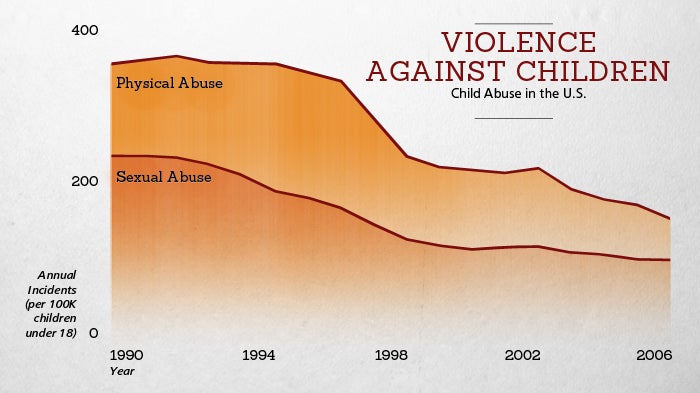Charting the Decline of Violence
Better Angels of Our Nature in graphs & numbers
In his book, Better Angels of Our Nature, Steven Pinker shows how violence is declining, using data and charts. Here’s a look at some of the data from the book.

In his book, The Better Angels of Our Nature, Steven Pinker shows with data and charts how violence is declining. Here’s a look at some of the data from the book.
Between the late Middle Ages and the 20th century, European countries saw a tenfold-to-fiftyfold decline in their rates of homicide.
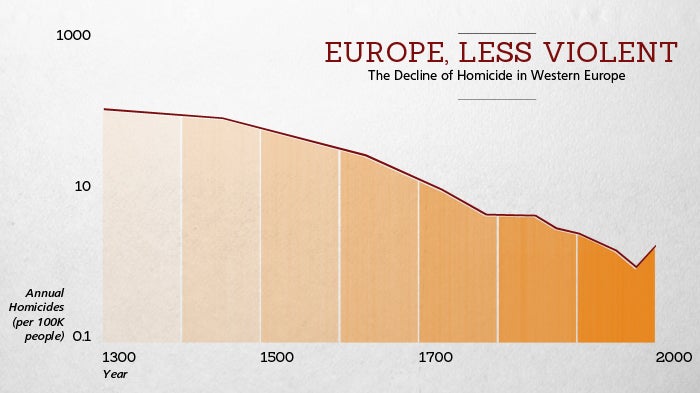
While the 20th century certainly had more violent deaths than earlier ones, it also had more people. World War II was certainly the worst thing that happened in human history in terms of absolute number of people killed. It’s not clear whether it was the worst in terms of the proportion of the population that was killed, because there were atrocities in previous generations that proportionately were comparable – the European Wars of Religion, the Mongol Invasions, to say nothing of tribal warfare that could kill a much larger percentage of the population than died in World War II.
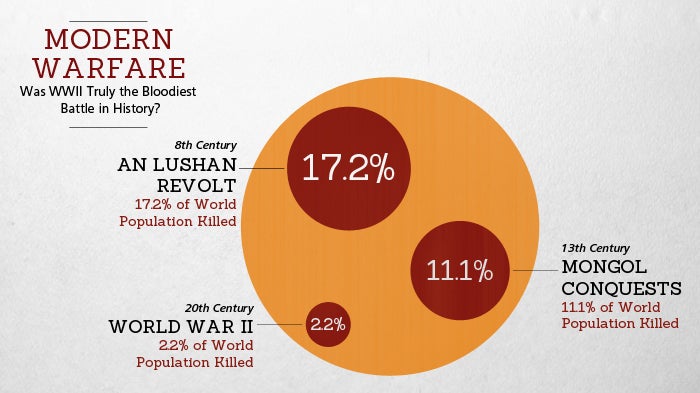
The rates of violence did a U-turn in the wrong direction in the 1960s. After centuries of violence going down, in the 1960s it went back up. The rebounding of violence in the 1960s defied every expectation. The decade was a time of unprecedented economic growth, nearly full employment, historical racial progress, and the blossoming of government social programs.
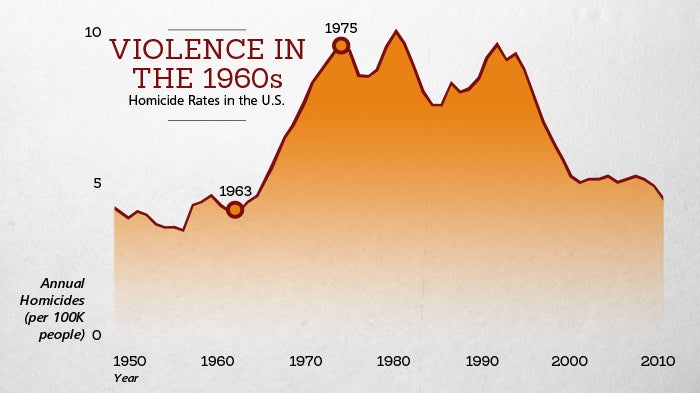
Use of the terms civil rights, women’s rights, children’s rights, gay rights, and animal rights in English-language books, 1948-2000. These staggered rises tell a story. Each of the movements took note of the success of its predecessors and adopted some of the tactics, rhetoric, and most significantly, moral rationale. The Rights Revolutions have brought us measurable and substantial declines in many categories of violence.
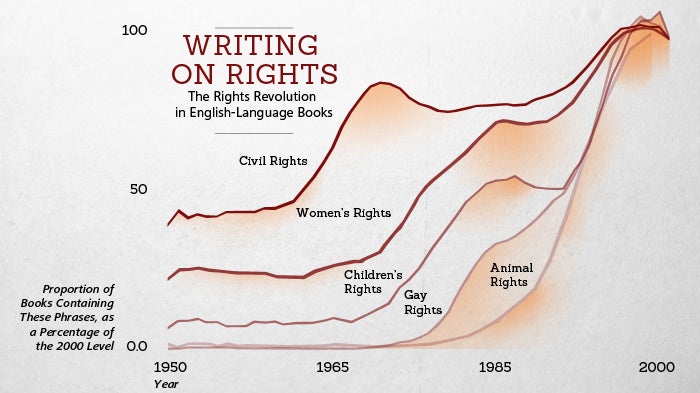
Violence in many ways has plunged over the course of history. The decline of violent behavior has been paralleled by a decline in attitudes that tolerate or glorify violence. For centuries, wife-beating was considered a normal part of marriage. In a 1995 survey more than 80 percent of the respondents deemed domestic violence a “very important social and legal issue”, 87 percent believed that intervention is necessary when a man hits his wife even if she is not injured, and 99 percent believe that legal intervention is necessary if a man injures his wife. Surveys that asked the same questions in different decades show striking changes.
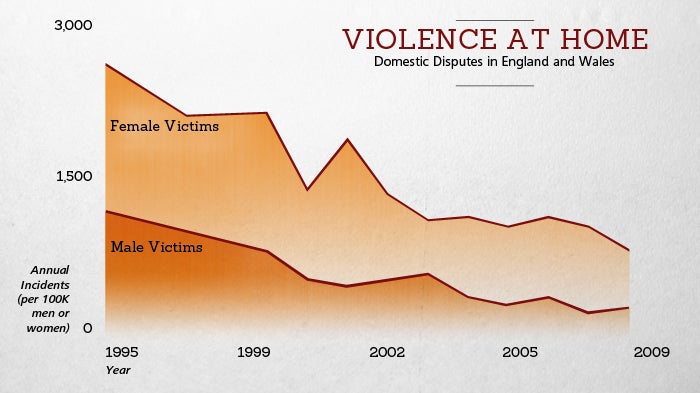
From 1990 to 2007 the rate of physical abuse of children fell by half. During this time the rate of sexual abuse, and the incidence of violent crimes against children such as assault, robbery, and rape, also fell by a third to two-thirds. Over the past two decades the lives of children and adolescents improved in just about every way you can measure. They were also less likely to run away, to get pregnant, to get into trouble with the law, and to kill themselves.
